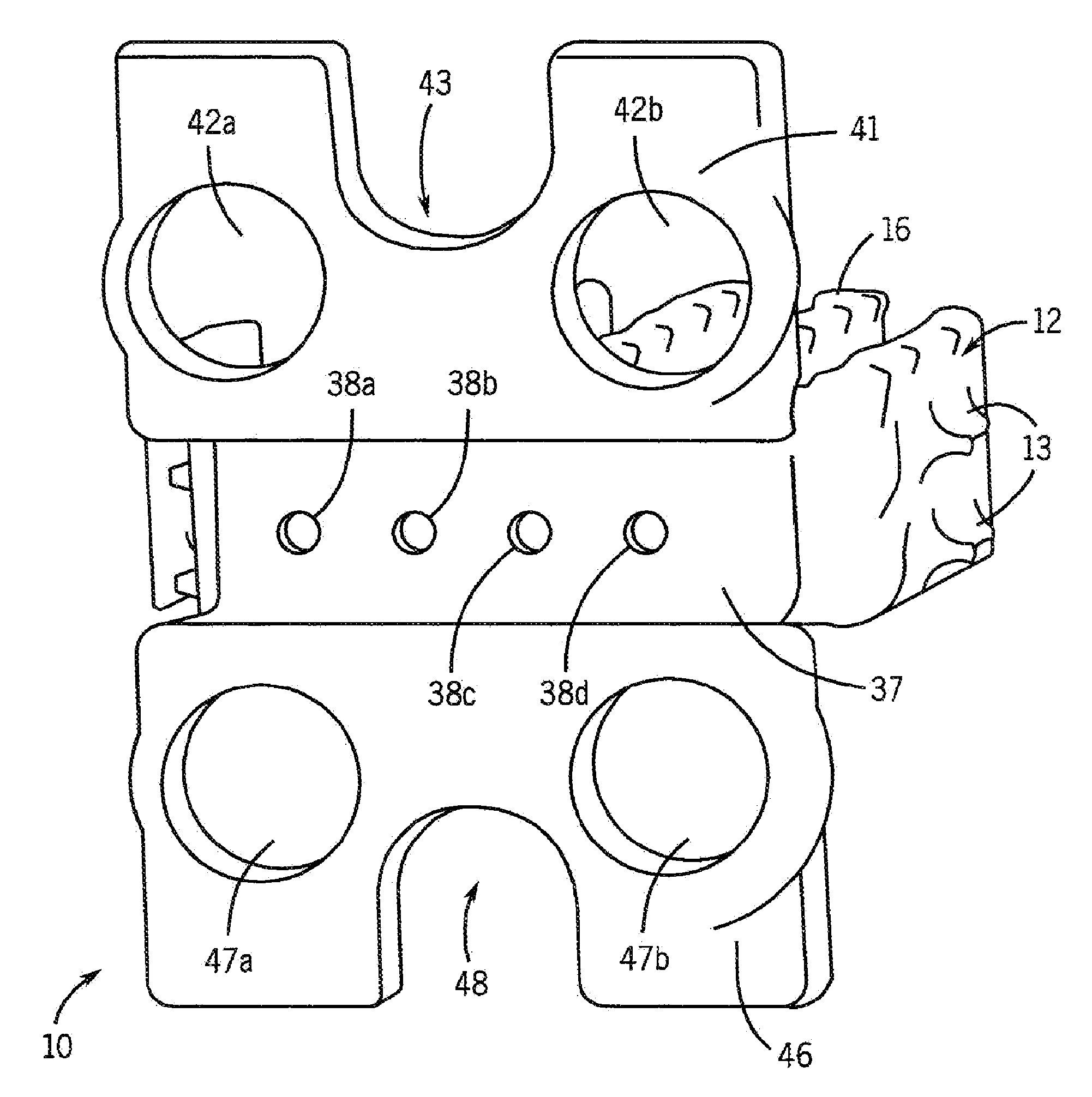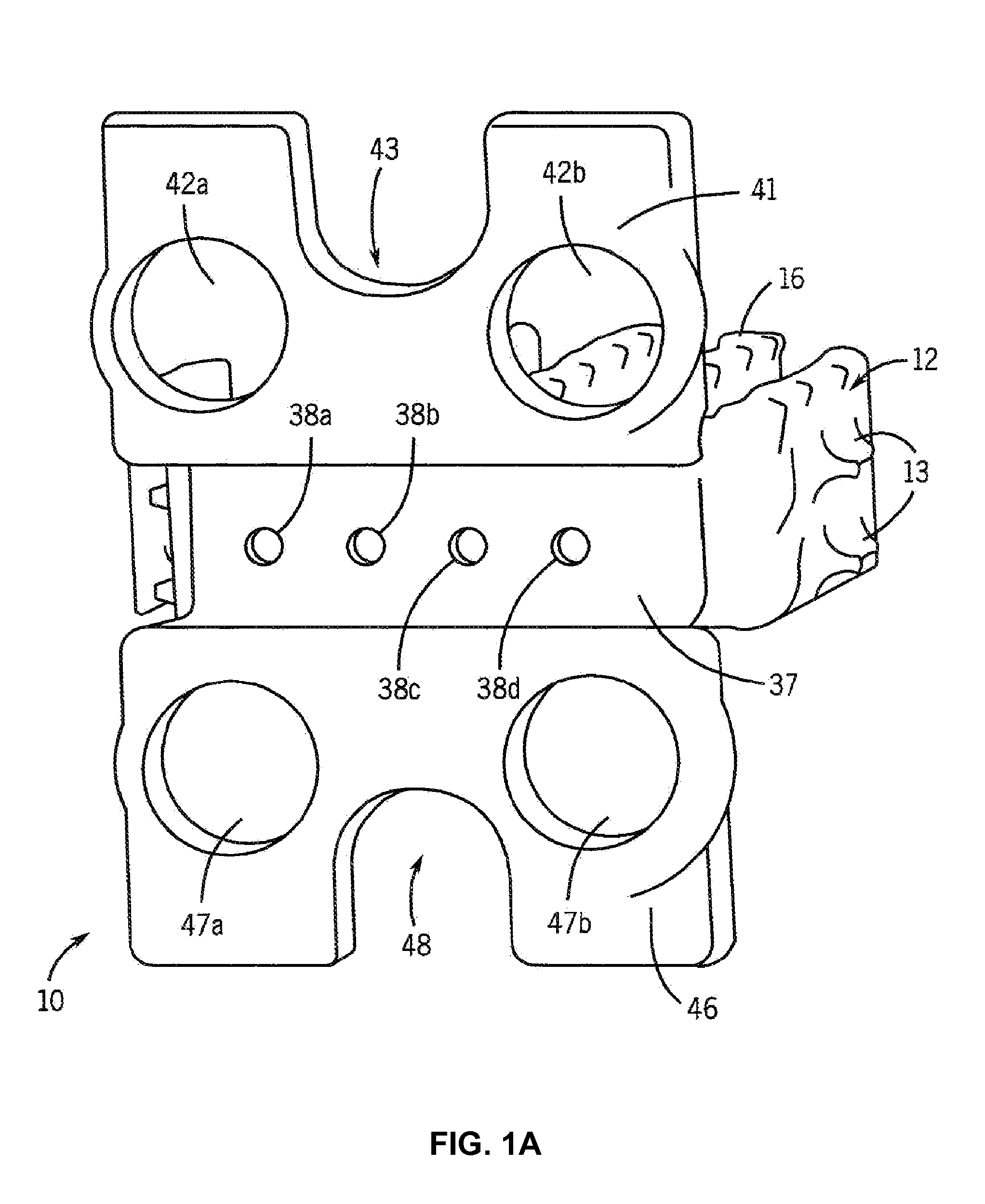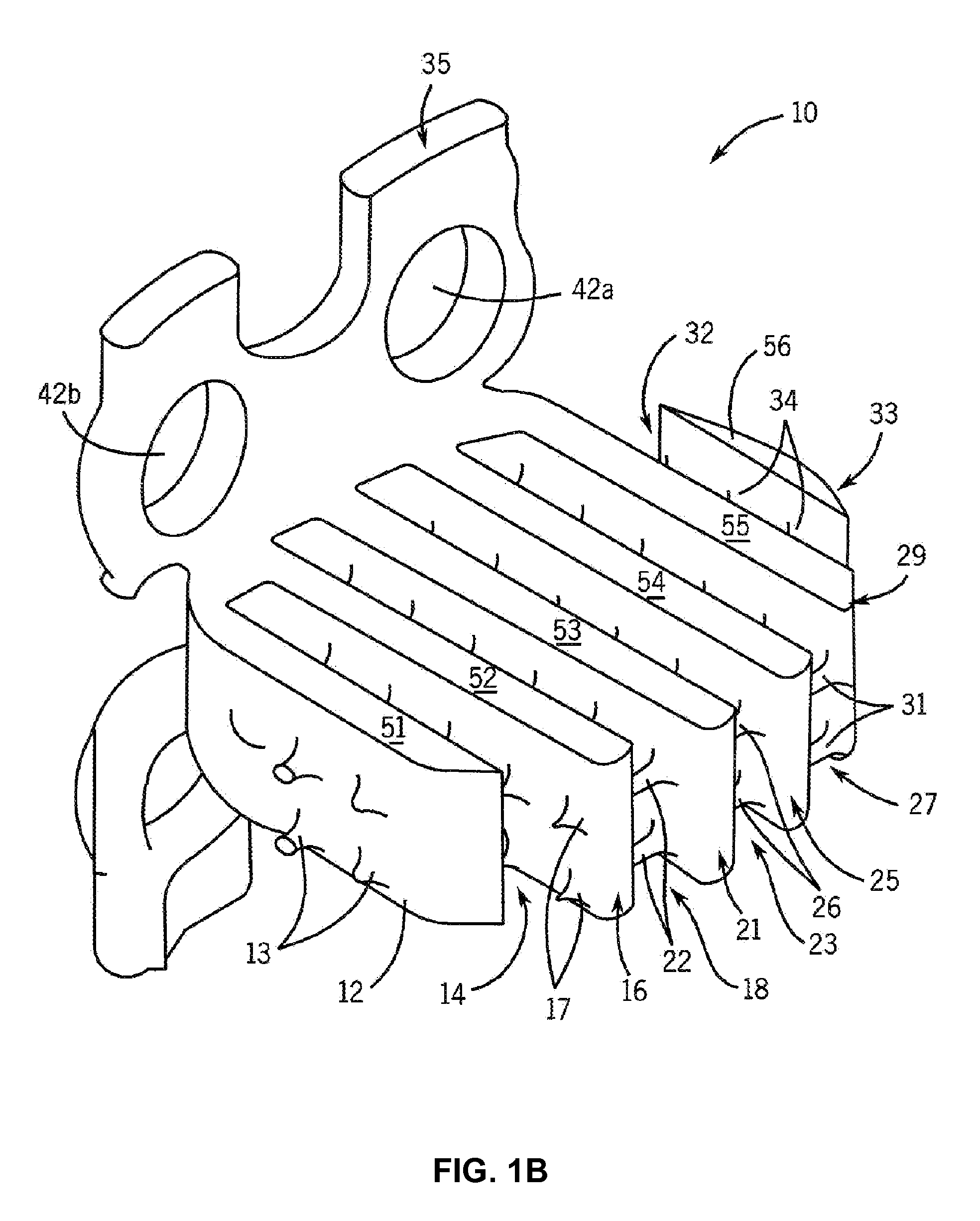Degradable cage for bone fusion
a bone fusion and cage technology, applied in the field of cages, can solve the problems of reducing the efficacy of interbody fusion, increasing the incidence of postoperative complications, and synovitis and the lymphatic spread of non-absorbable polymer debris, so as to improve the bioactivity of spinal implants, improve the effect of fusion efficiency and superior binding capacity
- Summary
- Abstract
- Description
- Claims
- Application Information
AI Technical Summary
Benefits of technology
Problems solved by technology
Method used
Image
Examples
example
In Vivo Fusion Using Polycaprolactone Cages in a Large Animal Model
[0089]Cages were designed and constructed using the methods described above. FIG. 7 shows the design model of the cages, and FIG. 8 shows the constructed cage. The interbody portion was 5.3 mm thick, having “fingers” designed to withstand surgical implantation loading in addition to in vivo compression forces and bending moments (FIG. 7). The plate was designed with four screw holes for surgical attachment (FIG. 7). These fusion device sizes were similar to human cage designs, a rationale for using the pig as an animal model. The manufacturing process can readily build 30 cages per day on one machine. Manufacturing quality was assessed both non-destructively using micro-computed tomography (micro-CT) scanning and mechanical compression testing. Micro-CT analysis (FIG. 9) demonstrated fidelity of manufactured device to the design with a defect volume of less than 0.6%.
[0090]Some of the cages were coated with a 50-100 ...
PUM
| Property | Measurement | Unit |
|---|---|---|
| Microstructure | aaaaa | aaaaa |
| Biocompatibility | aaaaa | aaaaa |
| Polymeric | aaaaa | aaaaa |
Abstract
Description
Claims
Application Information
 Login to View More
Login to View More - R&D
- Intellectual Property
- Life Sciences
- Materials
- Tech Scout
- Unparalleled Data Quality
- Higher Quality Content
- 60% Fewer Hallucinations
Browse by: Latest US Patents, China's latest patents, Technical Efficacy Thesaurus, Application Domain, Technology Topic, Popular Technical Reports.
© 2025 PatSnap. All rights reserved.Legal|Privacy policy|Modern Slavery Act Transparency Statement|Sitemap|About US| Contact US: help@patsnap.com



